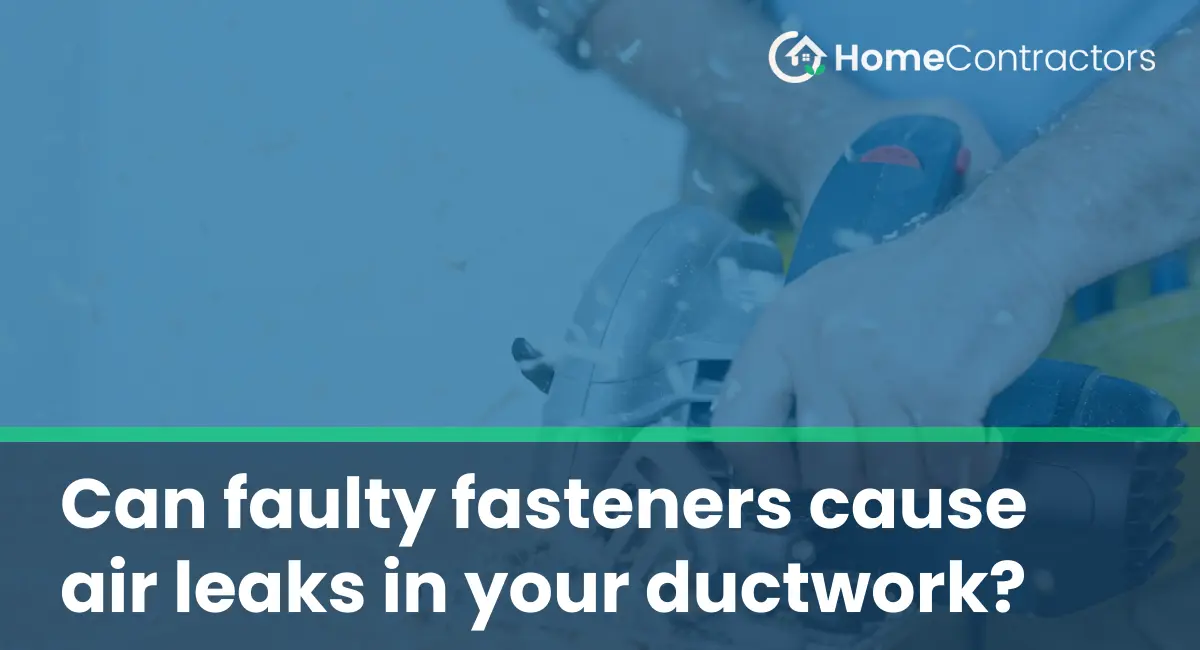Properly functioning ductwork is crucial for maintaining a comfortable and energy-efficient home or business. However, even a small air leak can have significant consequences, leading to increased energy bills, decreased indoor air quality, and reduced overall comfort. While there are several potential causes for air leaks in ductwork, one important factor to consider is the presence of faulty fasteners. In this article, we will explore the role of fasteners in ductwork, how they can lead to air leaks, and the importance of regular maintenance to prevent these issues.
Understanding the Role of Fasteners in Ductwork:
Fasteners, such as screws, clips, and tape, play a vital role in holding ductwork components together securely. They ensure that joints and seams remain airtight, allowing for efficient and effective airflow throughout the ventilation system. Fasteners are used during the initial installation of ductwork as well as when repairing or replacing damaged sections.
How Faulty Fasteners Lead to Air Leaks:
Over time, fasteners can deteriorate due to a variety of factors, including corrosion, vibration, or poor installation. When fasteners become loose, damaged, or dislodged, gaps or openings may develop between ductwork sections. These openings allow conditioned air to escape into unconditioned spaces, such as attics, crawlspaces, or wall cavities. Additionally, outside pollutants, humidity, and unwanted outdoor air can enter the system, compromising indoor air quality and overall HVAC system efficiency.
The Impact of Air Leaks in Ductwork:
Air leaks in ductwork can have several negative consequences that affect both comfort and energy efficiency. These include:
- Energy Loss: Air leaks require your HVAC system to work harder to compensate for the lost air, leading to increased energy consumption and higher utility bills.
- Reduced Performance: Leaky ducts divert airflow from its intended destination, resulting in uneven heating or cooling throughout your home or building. This can leave certain areas with inconsistent temperatures, compromising comfort levels.
- Poor Indoor Air Quality: Air leaks can introduce contaminants, allergens, and pollutants from unconditioned spaces into your indoor environment, reducing overall indoor air quality and potentially exacerbating respiratory issues.
Preventing Air Leaks Caused by Faulty Fasteners:
Regular inspection, maintenance, and repair of ductwork are crucial to preventing air leaks caused by faulty fasteners. Here are a few essential steps to help keep your ductwork airtight:
- Professional Inspection: Schedule regular inspections with a licensed HVAC technician to identify any loose or damaged fasteners and potential air leaks in your ductwork.
- Fastener Replacement: If faulty fasteners are identified, prompt replacement is necessary. This may involve tightening loose screws, replacing damaged clips, or resealing joints with appropriate duct tape or mastic sealant.
- Duct Sealing: Consider professional duct sealing services, which involve using specialized sealants to ensure airtight connections at all ductwork joints and seams. This process helps eliminate leaks caused by faulty fasteners and other potential weaknesses.
Faulty fasteners play a significant role in the occurrence of air leaks in ductwork, leading to compromised energy efficiency, decreased comfort, and diminished indoor air quality. Regular maintenance, including inspections and prompt repairs, is essential for preventing these issues. By addressing faulty fasteners and ensuring airtight connections in your ductwork, you can enjoy improved energy efficiency, enhanced comfort, and healthier indoor air quality for years to come.
